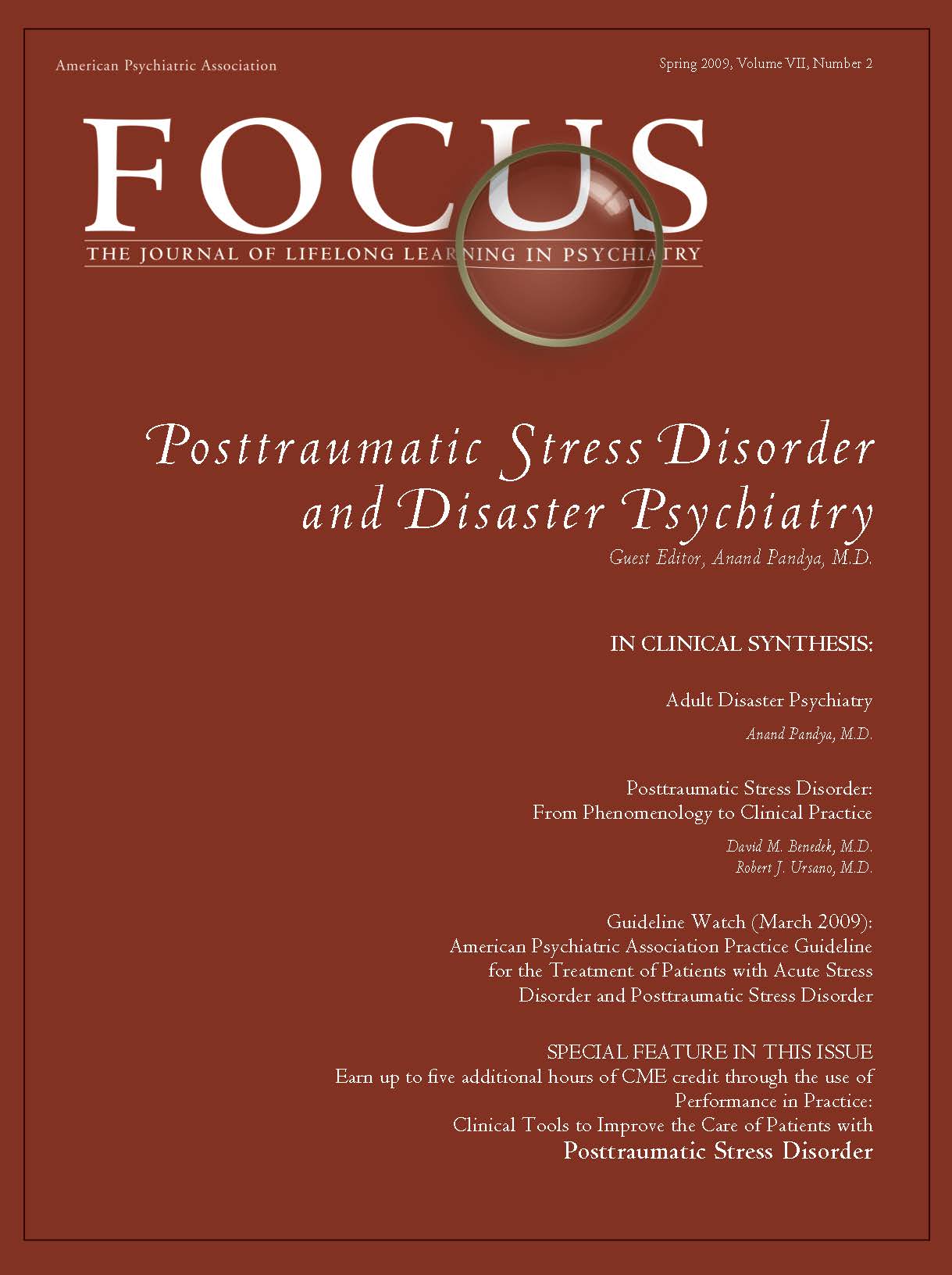PTSD is the most commonly described reaction to disasters with major depressive disorder being the second most studied (
6). In addition, to major depressive disorder and PTSD, the new onset of other anxiety disorders, notably generalized anxiety disorder and panic disorder, have been noted after disasters (
7). Medically unexplained physical symptoms or somatization are commonly described after disasters although the methodological limitations of existing studies limits our ability to estimate the incidence of somatoform disorders (
6,
8,
9). Although several studies have suggested that the rate of use of addictive substances increases after a disaster (
10,
11), researchers who have looked systematically for new-onset substance abuse and dependence have found relatively few new cases of these disorders with onset after the disaster (
12,
13). The rates of psychopathology vary notably between different disasters (
12,
14) and between different populations studied after the same disaster (
12,
15). A large review of disasters suggests that intentional man-made disasters (such as terrorist attacks) may have a higher impact than disasters that are the result of unintentional human activity (such as mass transportation accidents), which in turn may have a higher impact than natural disasters (such as floods, earthquakes, and tornados) (
6). Although it is intuitive that there should be a psychological impact from malicious intent, exceptions to this generalization have been identified (
16), which is not surprising because large natural disasters, such as hurricanes, can extend thousands of miles and can directly threaten the lives of millions of people, whereas some intentional man-made disasters (such as a workplace shooting) may have a much more circumscribed population that is directly affected.
Cultural beliefs about normative responses to death and trauma, varying attitudes about help-seeking behavior from general disaster relief to specific mental health services, and the role of culture-specific healing rituals and culture-specific idioms of distress all affect the response to disasters (
17,
18). Although the cultural variation in responses to disasters has lead some to question whether PTSD, itself, is a culture-bound syndrome (
18), studies from Asia (
19), Africa (
7), and Europe (
20) have shown estimated rates of PTSD that are within the range noted in disasters in the United States of America. The rate of PTSD in those exposed to trauma is also known to be affected by the duration of exposure to the trauma, the severity of the trauma, and physical proximity (DSM-IV-TR), which inevitably differs between disasters and between individuals affected by the same disaster. Other factors that may affect the psychological impact of a disaster are the degree to which participants may have control over future impact (
21) and their prior exposure to other traumas (
22,
23).

